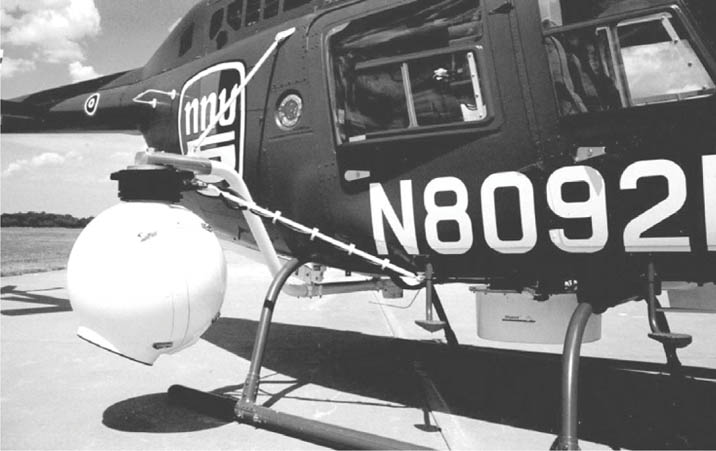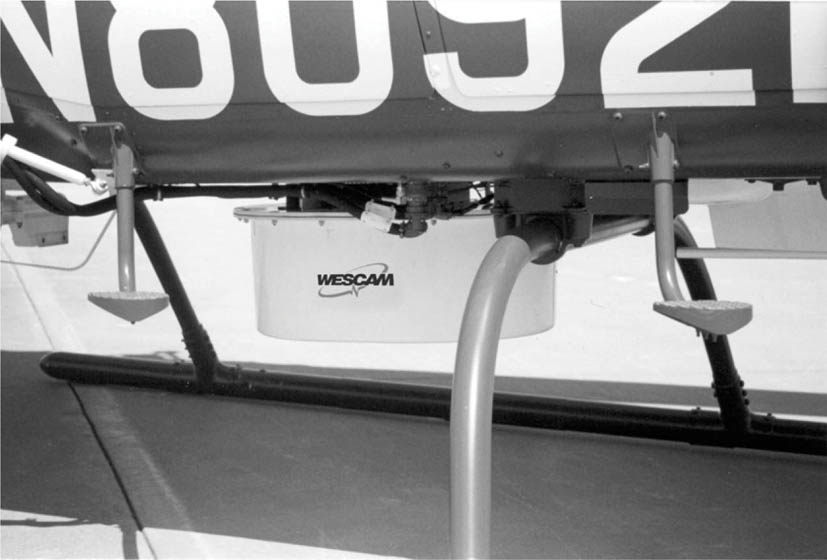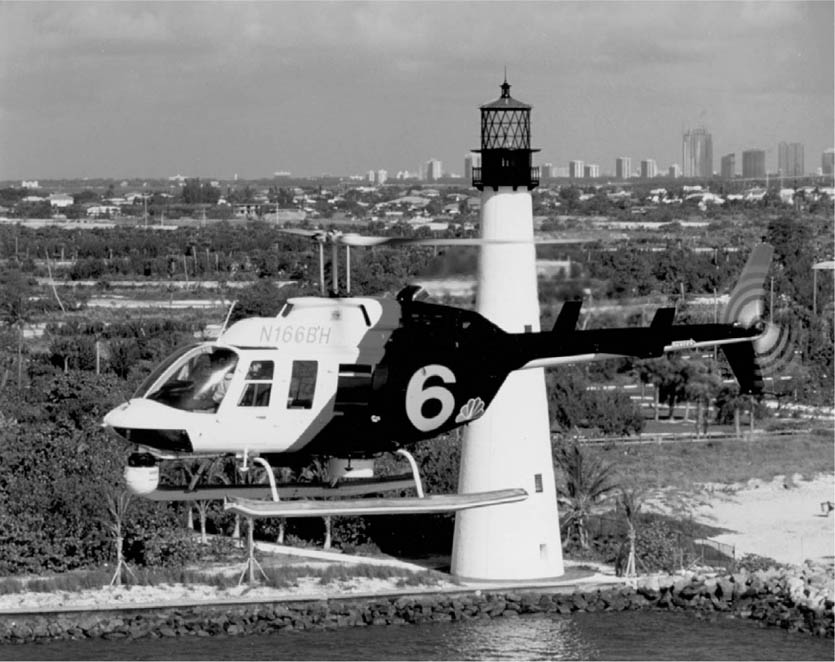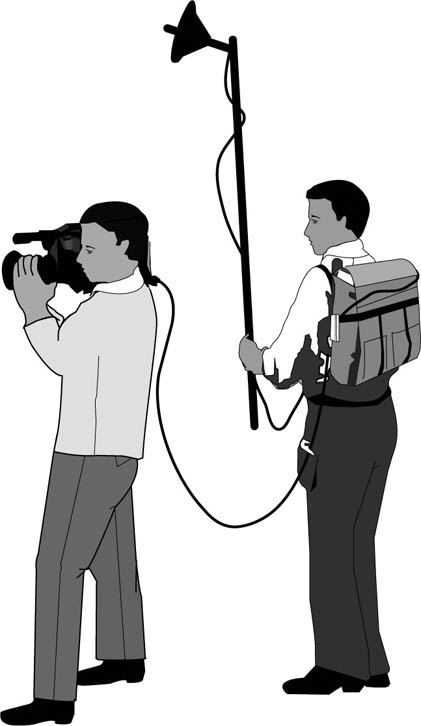Other microwave link platforms
The use of helicopters and light aircraft for ENG/OB microwave is often seen on sporting events, when either the event is spread out over a large area (such as the Tour De France cycle race, or city marathons), or if the sense of the event is enhanced by an aerial view – such as a major soccer or baseball tournament.
Airship links
Indeed, for stadium team sports it is common to use an airship or ‘blimp’ as this has the advantage of being able to hover indefinitely over a single position, or be able to move at a sedate pace to keep up with the event. It also has the advantage of being a lot cheaper to keep in the air than a helicopter, but has the disadvantage of being far more susceptible to bad weather (particularly high winds).
Helicopter links
Helicopters have a number of advantages – they can be quick to deploy, are able to get good camera views of an event (as their use by many police forces is testament to), and can provide a very viable aerial platform for microwave links. There are a number of microwave systems that are specially adapted to aerial use, and typically include an auto-tracking antenna, which will always point towards the receiver whatever the movement of the helicopter. The range of the link can be extended to over 200 km with suitable transmitter power, and helicopters are commonly used in the United States on local stations to give live traffic reports – a major drive to attracting viewers.
‘Live’ traffic report helicopter (© Wescam Inc.)

It is worth noting that helicopters are a hostile environment for electronics, principally due to the vibration picked up through the air frame. This is particularly an issue in the digital domain, where the degree of stability required to pass a digital signal through a compression and COFDM transmission system is very challenging. Slight variations in frequency can destroy the COFDM transmission.
However, in other respects, helicopters are the ideal platform for the use of COFDM links. Traditional FM analogue microwave transmissions from helicopters suffer from fading, break up, audio and video interference, and ghosting. Any microwave transmission from a moving source can be particularly susceptible to dynamic interference, characterized by signal ‘dropouts’, moving multiple ghosting, and severe colour and audio noise fluctuations. Transmission from a helicopter in flight will certainly generate a significant number of reflections.
Microwave radome (cover) (© Wescam Inc.)

Because COFDM is especially resilient in an environment rich in bounced signals, it is a transmission system that has been seen to suit use on helicopters – as a standard COFDM was actually developed in part to suit mobile applications on vehicles.
A helicopter can also be used as an aerial mid-point, where the signal has to perhaps be carried over a range of mountains. It is a lot easier to put the mid-point in the helicopter than have to scale a mountain to rig the equipment! The issue of course is cost – helicopters are expensive machines, and their use in this respect is diminishing (as with mid-points in general) as the use of satellites can achieve the same result at a lower cost. Helicopters are also susceptible to weather conditions, whereas in general an SNG uplink is not.
Helicopter equipped with link and gyro-stabilized live camera (ball at front houses the camera) (© Wescam Inc.)

Man-pack links
On occasions, a microwave link needs to be more portable than simply being mounted on a truck – sometimes it needs to be carried by a person. Such links are called ‘man-pack’ links, and are much smaller and lighter units than those mounted on tripods or on truck masts. Typically, the link transmitter is a little larger than a pack of cigarettes, powered from a camera battery, feeding either a small horn type of antenna (which needs to be pointed in the direction of the receiver) or uses an omnidirectional antenna. The equipment is usually mounted onto a back-pack, with the antenna projecting above the head of the operator.
Man-pack type microwave links are typically used for short-haul operation in stadiums or in crowd situations where the camera needs to rove without the encumbrance of a cable connection. However, they are being superseded by camera mounted links, usually referred to as radio cameras or ‘radio-cams’.
Man-pack link

